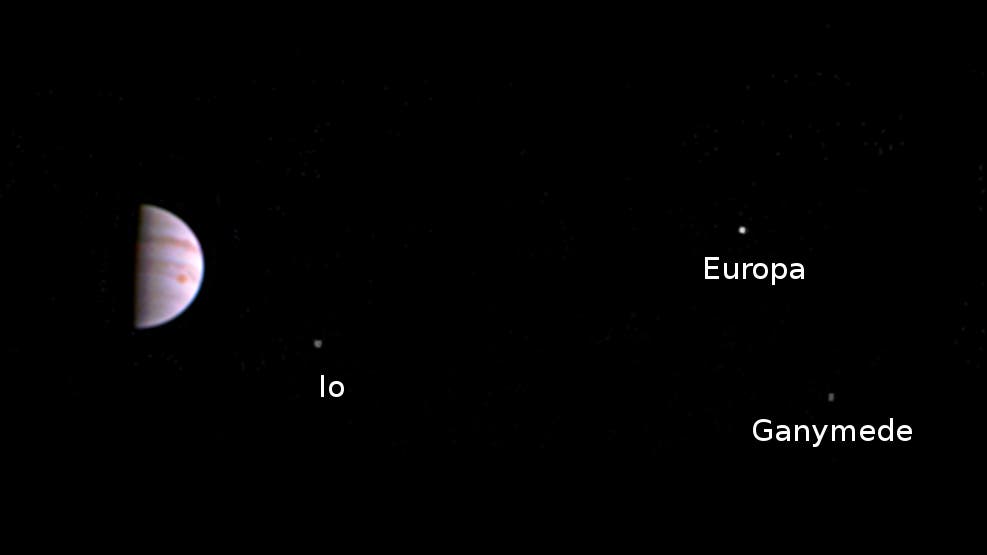
NASA’s Juno spacecraft has sent back the first image of Jupiter since it entered its orbit last week, capturing the planet’s famous Great Red Spot as well as three of its moons – Europa, Ganymede and Io. The probe was approximately 2.7 million miles away from Jupiter when it snapped the spectacular photo.
“This scene from JunoCam indicates it survived its first pass through Jupiter’s extreme radiation environment without any degradation and is ready to take on Jupiter,” said Scott Bolton of the Southwest Research Institute in San Antonio and Juno principal investigator. “We can’t wait to see the first view of Jupiter’s poles.
It took Juno five years to reach the massive planet, eventually entering its orbit on July 4. On July 6, the team powered up the probe’s instruments and on July 10 they turned on the JunoCam, a color, visible-light camera specially designed to take pictures of Jupiter’s poles and cloud tops.
Although the JunoCam will help give context to the data gained from the other instruments on the probe, it’s main purpose is to engage the public. It is not considered to be one of the mission’s main scientific instruments.
The Juno spacecraft is currently making its way away from Jupiter towards the farthest reaches of its elliptical, 53-day orbit, where it will continue to snap photos along its journey. However, the main goal of the mission is to examine the giant planet’s magnetic and gravitational fields, as well as its composition and internal structure. Scientists are hopeful that data from the missions will help them better understand how Jupiter and the solar system formed and evolved over the years.
“JunoCam will continue to take images as we go around in this first orbit,” said Candy Hansen of the Planetary Science Institute in Tucson, Arizona and Juno co-investigator. “The first high-resolution images of the planet will be taken on August 27, when Juno makes its next close pass to Jupiter.”
The Juno mission is set to end in February 2018 with one final plunge into Jupiter’s hazy atmosphere. All photos from the JunoCam will continue to be posted on the mission’s official website.






